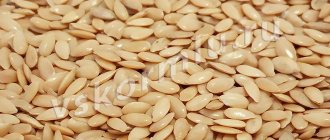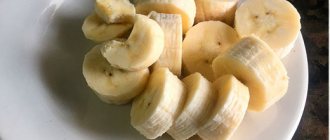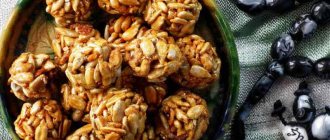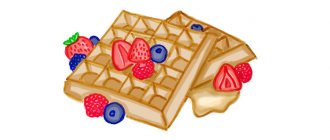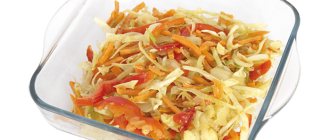Useful product
It's no secret that you can and should eat cottage cheese. We are told about this from early childhood, promising muscle growth and increased mental activity. Cottage cheese dishes are not only healthy, but also very tasty.
Fermented milk products, and in particular cottage cheese, have an invariably positive effect on the body, namely:
- promote rapid protein absorption;
- improve the removal of urine and bile from the body;
- are the prevention of pancreatic diseases;
- help the liver function;
- restore the nervous system;
- increase the level of hemoglobin in the blood;
- improve the functioning of the cardiovascular system;
- lower blood pressure.
As you can see, the list of useful properties is impressive. But are fermented milk products acceptable during breastfeeding?
Useful properties and composition
The benefits of this product are due to its chemical composition.
Table 1 - Chemical composition and effect on the body
| Element: | % of daily value in 100 g: | Impact on the body: |
| Vitamin A | 8.9 | Antioxidant, important for visual acuity, healthy hair, skin, strengthening the immune system. |
| Vitamin B 1 | 2.7 | Activates brain function, improves memory, increases the body's resistance to stress, and participates in regeneration processes. |
| Vitamin B 2 | 16.7 | Participates in the processes of hematopoiesis, improves the condition of the skin, nails, hair, promotes the absorption of iron, reduces the impact of toxins on the body. |
| Vitamin PP | 15.9 | Improves blood microcirculation, participates in the synthesis of amino acids, promotes the production of hemoglobin, and normalizes cardiac activity. |
| Potassium | 4.5 | In conjunction with sodium, it normalizes water balance, strengthens the heart, and activates brain function. |
| Calcium | 16.4 | It is the basis of bone tissue and teeth, strengthens the nervous system, improves blood clotting, and participates in the synthesis of hormones. |
| Magnesium | 5.8 | Normalizes the functioning of the kidneys and digestive system, strengthens the nervous system, eliminating irritability, insomnia and fatigue. |
| Sodium | 3.2 | Participates in the production of enzymes and gastric juice, normalizes the acid-base balance. |
| Phosphorus | 27.5 | Participates in energy metabolism, normalizes acid-base balance, is necessary for bone tissue and teeth; deficiency leads to anemia and rickets. |
| Iron | 2.2 | Takes part in the formation of hemoglobin, strengthens protective functions, and synthesizes thyroid hormones. |
Is cottage cheese suitable for nursing mothers and what kind?
Does a nursing mother need cottage cheese? Of course, the animal protein in this product will provide a nursing woman with considerable benefits. It is easily absorbed by the body and is included in metabolic processes. As a result, the mother’s body recovers more quickly after childbirth. Also, consuming cottage cheese while breastfeeding can increase the amount of mother's milk. Cottage cheese also compensates for the lack of calcium in the body of a nursing mother during breastfeeding.
As a rule, a young mother has many questions regarding this product in her diet. Here are the most common ones.
Is it possible for mom to eat cottage cheese with sour cream during pregnancy?
Yes, you can. This mixture is a source of large amounts of protein, vitamins and beneficial elements. But do not forget that this combination has increased fat content. Therefore, it should be introduced into the diet when the baby is 3 months old. All the “benefits” relate only to very high-quality, homemade cottage cheese and sour cream. Do not forget that store-bought products are not always safe. Pay attention to the label. The correct product should contain only whole milk (sometimes with the addition of skim milk), plus lactic acid bacteria. There should be no preservatives or flavors. Powdered milk is also an undesirable component.
Can nursing mothers eat curd mass?
And again, the answer is yes. And again: if the curd mass is “correct”. You should not get carried away with the mass bought in the store, especially with various flavoring additives (chocolate, vanilla, etc.). It's best to make this delicacy yourself. Cottage cheese blended in a blender with sugar will be much healthier than store-bought counterparts. To enhance the taste, you can add raisins or dried fruits to the dish. But think of this product as a dessert and eat it in “dessert” doses. You can eat sugar during breastfeeding, but only a little bit.
How much cottage cheese can a nursing mother eat per day?
For the full functioning of all body systems, it is enough to eat 100-200 g of product per day. If you want more, and the baby does not have an allergic reaction, you can do more.
Fat, low-fat, low-fat - which cottage cheese to choose while breastfeeding?
It is better for a nursing mother to avoid overly fatty versions of cottage cheese. They negatively affect the liver and contribute to the gain of extra pounds. A low-fat product is also a “so-so” option, since calcium (necessary for a nursing mother) and many vitamins without fat are absorbed very poorly. In addition, low-fat foods taste very bland and do not satisfy hunger. And remember: a woman needs animal fat (in moderation, of course), especially if she is breastfeeding. The lack of animal fats in the diet leads to hormonal imbalance and hypovitaminosis.
It is best to choose a product with a fat content of 5%, maximum 9%. If your mother is overweight and wants to lose weight, choose a fat content of 3-5%.
How soon after the birth of a child should cottage cheese be introduced into the mother’s menu?
In principle, this product is allowed for a nursing mother in the first month of a newborn’s life. It is considered one of the safest. However, it would be a good idea to wait at least a week or two so as not to harm the newborn.
Which cottage cheese to choose during breastfeeding: tips
Cottage cheese for a woman who is breastfeeding must be chosen carefully. The product must be from a trusted manufacturer, whether it is a homemade or store-bought product. You should not save money by choosing cheap products, because we are talking about the health of the baby and mother. The composition should not include any additives.
Several selection criteria:
- Fat content. A product that is too fatty can affect the weight of a nursing mother. Low-fat is also not suitable; animal fats promote the absorption of vitamins. The optimal fat content is 5-9% (or 3-5% if the mother wants to lose weight).
- Package. There should be no damage or swelling. The packaging should not be sticky or wet - all these are signs of spoiled cottage cheese.
- Best before date . You definitely need to pay attention to this point, since the product is perishable. It is also checked by smell: stale goods have a characteristic unpleasant, sour smell.
Grained cottage cheese is a variety of regular cottage cheese, characterized by reduced fat content. The structure resembles grain, it is consumed on the same basis as regular one.
Child's reaction to cottage cheese
Cottage cheese during lactation, just like other fermented milk products, has a strong effect on the body of mother and baby. Most often, this influence is positive. But it is worth considering that such products, despite all their benefits, can cause problems in the baby’s body.
A nursing mother can use cottage cheese (of course, within acceptable limits). However, cottage cheese, as well as any other new product, can cause undesirable processes in the baby’s body.
The popular children's doctor Komarovsky is considered a supporter of cottage cheese and fermented milk products. It is not for nothing that complementary feeding according to his scheme begins with kefir and cottage cheese with the further introduction of cereals, vegetables and other products. But consuming sour milk, like any other product, is an individual matter. Do not also forget about the strict dosage when consuming any fermented milk product.
The child’s immature body may accept the incoming cottage cheese as an enemy agent and turn on defensive reactions. And all because of the milk protein content in the product. If a baby has an intolerance to cow's milk, sometimes an allergy to cottage cheese occurs in the infant. Defense mechanisms result in the following reactions that may occur against the background of such nutrition:
- Problems with the gastrointestinal tract: the baby becomes stronger or, on the contrary, weakens, spasms, colic, and gas formation occur.
- A rash may appear on the face and body - this is the main sign of an allergy.
However, cottage cheese is much safer during breastfeeding than whole milk. The secret is that lactic acid bacteria soften the effect of milk protein and help them to be absorbed correctly. Therefore, the reaction occurs infrequently.
In general, cottage cheese has the most beneficial effect on the health of the baby. However, we should not forget that every organism (even the smallest) is individual. A particular child may react to fermented milk foods in an unconventional way. In this case, mom should remove cottage cheese from the menu for a while. Or switch to cheesecakes and casseroles: heat treatment will help neutralize allergic reactions.
How to choose quality cottage cheese
Increased demands are placed on products during breastfeeding. Cottage cheese during breastfeeding must be a high-quality product, contain the stated nutrients and be free of pathogenic bacteria, fungi, and mold. It is better to take a store-bought fermented milk product, it is certified and made industrially.
It is good to buy fermented milk products in children's dairy kitchens or in diet departments. It is not recommended to buy it in the markets; it is not known under what conditions it was prepared and is of dubious quality. If mom has time or has help, it is preferable to make it yourself at home.
There should be nothing in the composition other than milk and sourdough. The more excipients, the less natural the product. On store shelves there is a fatty product - up to 18%, medium fat - up to 9% and low-fat - up to 3%. It is impossible to completely degrease it; a minimal proportion of fat will always remain. At the same time, vitamins and microelements are lost during the defatting process; in return, the manufacturer adds sugar, increasing the calorie content. Therefore, it is not correct to prefer low-fat or low-fat cottage cheese for dietary purposes. This is a marketing ploy by the manufacturer.
How to make cottage cheese at home
Take a liter of milk, add 1 tablespoon of kefir, mix, leave to ferment for 6-8 hours. Then place on the stove, bring to a boil, but do not boil. As soon as the whey separates and lumps form, remove from the stove. Pour the contents into gauze and hang to drain the liquid. During lactation, freshly prepared cottage cheese is stored in the refrigerator in a glass or enamel container for 2-3 days.
Is it necessary to eat cottage cheese while breastfeeding?
Of course, no one forces a mother to eat cottage cheese while breastfeeding a newborn if she doesn’t want to. Also, no one limits it - of course, if the baby does not have allergies. It is important to remember that any dish should bring pleasure to the nursing mother. If you force yourself to eat healthy but unloved foods, this will negatively affect the mother’s emotional state and her digestion. And of course, do not forget about moderation and dosage. With this approach, cottage cheese during breastfeeding will bring only benefit and pleasure to mother and baby.
In other words, consuming curd products during lactation is desirable, but not necessary - it is quite acceptable to replace it with other healthy high-protein foods. But it is imperative to follow certain rules for consuming this fermented milk product:
- When purchasing fermented milk products on store shelves, you need to pay close attention to the composition and expiration dates of the purchase.
- Store-bought cottage cheese must be consumed within three days after opening the package.
- Berries and fruits should be added to cottage cheese with caution, and not earlier than the baby is 3 months old.
How often and how much cottage cheese can you eat?
You can eat the product almost immediately after the baby is born every day, but it should be introduced gradually due to the risk of allergies. Therefore, they watch the child’s reaction. On the first day, try 1 tablespoon and observe the baby for 24 hours. If there is no negative reaction from the skin and digestive organs: no loose stools or constipation, rashes, redness, then you can continue taking it, gradually increasing the volume to 300 grams per day.
Include cottage cheese with sour cream in the diet with caution, as the dish is fatty.
When taking sour cream, the baby develops digestive problems: constipation, colic. The child’s enzyme system is immature and it is difficult for her to digest fat.
Is it possible for a mother to eat cottage cheese in the first month after giving birth?
The fermented milk product is allowed for consumption 2 weeks after delivery. A prerequisite is to introduce it into food gradually, observing the baby’s reaction. Cottage cheese is an additional source of animal protein and calcium, which the growing body of the baby and mother need, because with milk she gives away a lot of useful elements.
Cottage cheese dishes during lactation
If a nursing woman does not like the taste of this product, it is not at all necessary to eat it in its pure form. A nursing mother can use cottage cheese as a base for other tasty and healthy dishes.
Homemade cottage cheese recipe
This dish is prepared using sour milk that has undergone heat treatment.
The cooking process includes the following steps:
- Place the pan with yogurt poured into it in a water bath, waiting for the whey to completely separate.
- Prepare a piece of gauze and a colander.
- Pour the contents of the pan into a colander. The liquid drains off, but the cottage cheese remains in the colander.
- Hang the resulting curd in gauze at a height. Another option is to leave it in a colander and press it with a press. The holding time for the resulting mass is 1-3 hours.
Cottage cheese casserole
One of the most popular dishes during lactation is, of course, a casserole for a nursing mother. It is made according to this recipe:
- 3 tablespoons of sour cream are combined with 2 tablespoons of semolina, the resulting mass is left for half an hour.
- Any dried fruit in the amount of 50 g is poured with boiling water and set aside for about 20 minutes.
- All prepared components are mixed with 500 g of cottage cheese, followed by a chicken egg, 3 tbsp. sugar, a pinch of salt.
- The prepared pan is greased with oil, the curd mass is poured into it and baked for 40 minutes in an oven preheated to 180 degrees.
When the casserole is baked, it is carefully removed from the mold and enjoyed as a great dessert for a nursing mother.
Dumplings with dough and lazy dumplings
Is it possible for nursing mothers to have dumplings with cottage cheese? Of course, if they are made by caring hands at home and using the highest quality products. To prepare the dish you will need:
- Cottage cheese - 500 g;
- Eggs - 2 pcs.;
- Water - 150 g;
- Flour - 3 cups;
- Vegetable oil - 1 tbsp;
- Salt, sugar - to taste;
- Sour cream - for seasoning the finished dish.
Water, salt, sugar, 1 egg and butter are mixed together. The resulting mass is gently whisked with a fork, flour is gradually introduced, and a stiff dough is kneaded. The cottage cheese is blended in a blender, after which an egg beaten with a fork and sugar to taste are added. The resulting mixture is mixed with the dough and kneaded thoroughly. The dough is rolled out, circles are cut using a glass. The dumplings are given the desired shape.
Dumplings are thrown into boiling water and cooked for 3-4 minutes. The finished dish is placed on a plate and mixed with sour cream.
After making sure that a nursing mother can eat dumplings, do not forget about moderate portions of the delicacy eaten.
Cheesecakes in the oven
Cheesecakes, or cottage cheese, are another healthy dish made from cottage cheese during breastfeeding. To prepare them you will need:
- 100 g cottage cheese;
- 1 chicken egg;
- 2-3 tbsp. l. semolina.
- Sugar to taste.
All ingredients are mixed together.
Small pancakes are formed from the resulting mass. They are placed on a prepared baking sheet and baked for approximately 15-17 minutes. Cottage cheese is an extremely healthy delicacy. For a mother who has endured the difficulties of pregnancy and childbirth and is getting used to the process of lactation, such a product will become completely indispensable. However, the benefits of this product do not mean that you need to eat kilograms of it, hoping for a miraculous effect. Normalcy and restraint are the mother’s main motto during this period. Do not forget that cottage cheese, like any other new product, may not have the best effect on the baby’s health. It is for this reason that when introducing fermented milk products into the diet, you need to carefully monitor the child’s reaction. At the slightest sign of allergic reactions or gastric disorders in the baby, the mother should immediately exclude the questionable product for a while.
The benefits of cottage cheese and sour cream
- Firstly, it should be noted that these fermented milk products contain a huge amount of protein, which is completely absorbed by the body, which prevents weight gain.
- And vitamins A, B, C, E and PP exclusively increase the beneficial properties of protein.
- Due to the systematic use of cottage cheese and sour cream during the lactation period, the baby builds a healthy skeleton and strong muscles, intensive physical and mental development is observed, the immune system is strengthened, and teeth and hair grow.
Enough 100 g of cottage cheese and 1 tsp. sour cream to saturate the body with its daily requirement. But at the same time, the lower the fat content of the products, the better.
In what cases is cottage cheese contraindicated?
The main rule: the product must be fresh! Since cottage cheese is a perishable product, consumption with a questionable expiration date can cause poisoning and negatively affect the baby.
Contraindication for use is intolerance to the protein contained in cow's milk. It can cause allergic and other manifestations in the form of:
- skin rashes;
- diarrhea;
- constipation;
- colic and spasms;
- regurgitation.
The fact is that the human immune system recognizes cow protein as a foreign substance and a protective reaction occurs. This reaction is due to the absence or presence in insufficient quantities of the enzyme responsible for protein digestion. Therefore, despite all its usefulness, in this case it must be excluded from the diet when breastfeeding.
If the mother has kidney problems, gastritis or atherosclerosis, it is also recommended to avoid consumption. Proteins in such an organism are poorly absorbed.
Now it has become fashionable to replace cow's cottage cheese with an analogue made from goat's milk, but it is better to consult a specialist in each specific case.
Cottage cheese and GV - prohibitions
The only contraindication to the consumption of fermented milk and dairy products is congenital intolerance to milk protein. Moreover, it often happens that before pregnancy a woman did not know anything about it. The problem manifests itself as skin rashes, reddish spots, obsessive itching and is associated with a protective reaction of the body, which recognizes protein elements as hostile. If you have allergies, doctors advise switching to products made from goat milk.
cottage cheese :
- in case of urinary tract diseases or atherosclerosis, protein and nutrients will not be absorbed;
- for gastritis and gastroduodenitis - the products will lead to heaviness in the stomach and discomfort.
Overeating by a nursing woman can cause flatulence and diarrhea. Unpleasant symptoms will appear in both mother and child. The period of breastfeeding implies the introduction of cottage cheese into the diet, but in reasonable quantities. A young mother needs to forget about her favorite chocolate-coated cheeses, sweet curds with additives and creams. Natural cottage cheese with a fat content of 5-9% and dishes allowed from it are the basis of nutrition in the first 12 months after childbirth during breastfeeding.
I am Mikhail, the owner of this site. I love to cook, and I have the appropriate education as a food industry technologist (more detailed information here). True, I work in a different field, but I enjoy doing what I love in my free time. Everyone at home likes it, especially my wife))) I’ve also been a vegetarian for several years, which is why there are so many eggless cottage cheese recipes on the site.
